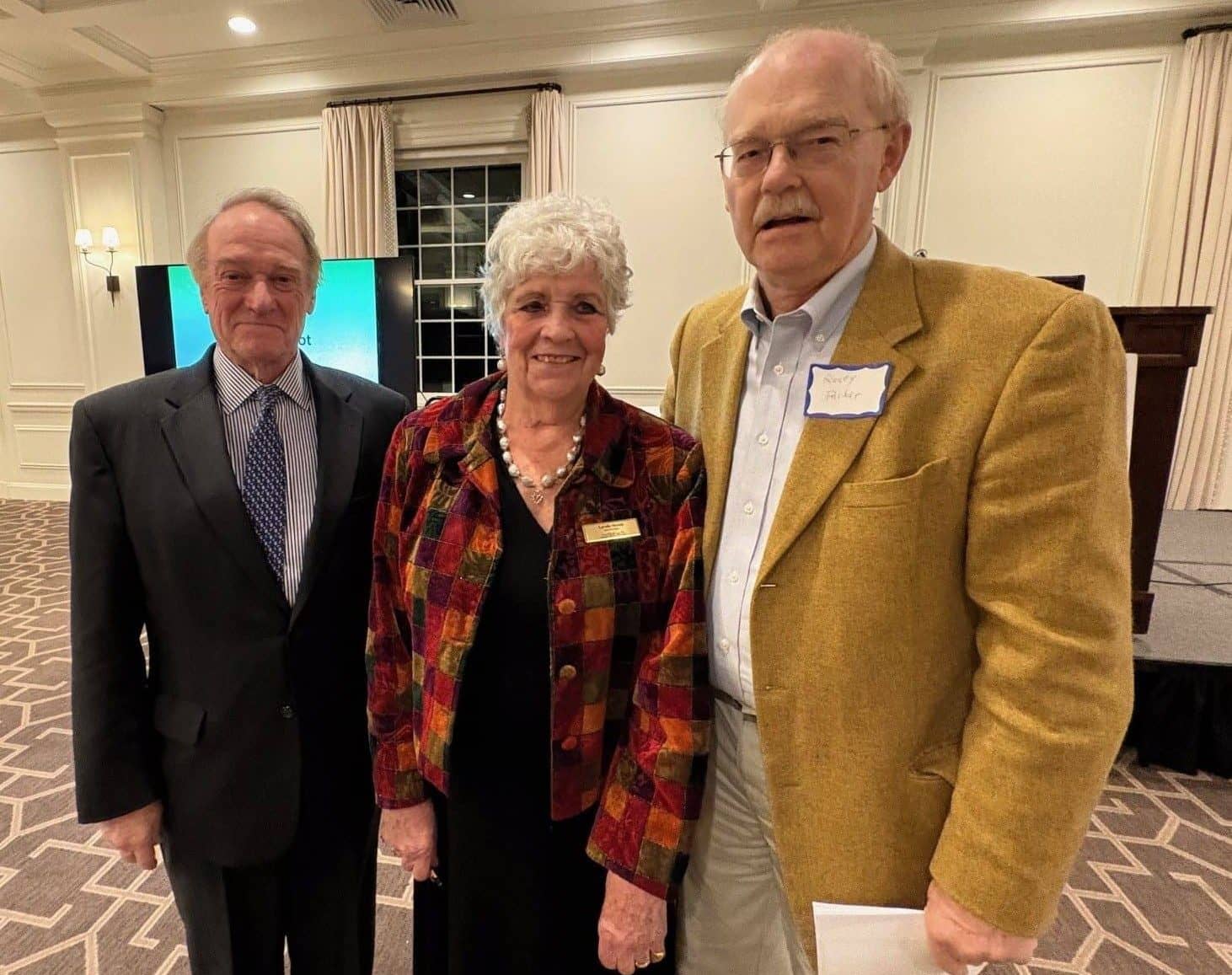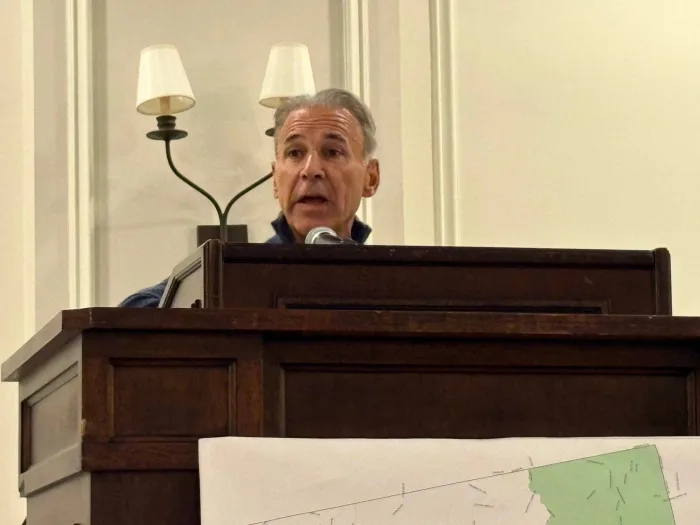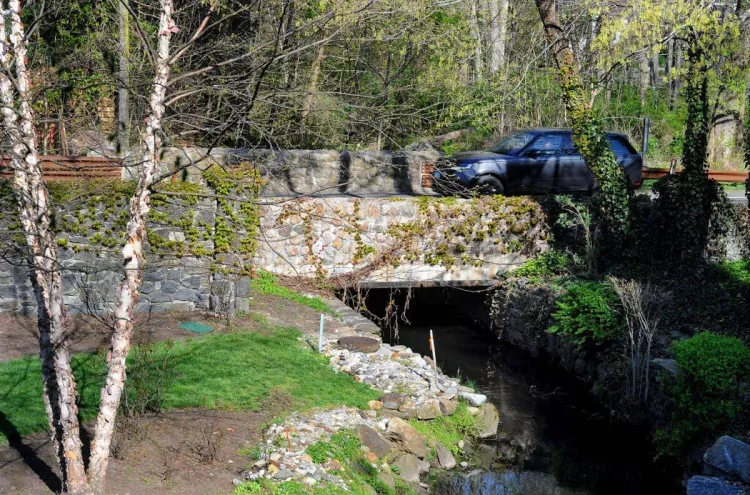
By Anne W. Semmes
There were some positive developments revealed before some 70 members of the Northeast Greenwich Association (NGA) at their annual meeting held at the Greenwich Country Club last Sunday evening. The NGA represents a quarter of the total area of the Town of Greenwich, extending from the very northeast corner of Greenwich down to Greenwich Hospital. And critical to its access is the route of North Street. With the necessary replacement of the North Street Bridge, over the West Brothers Brook, a project long in the planning, with its decay and water issues, a revised Department of Public Works (SPW) plan is cutting the length of the construction period and resulting obstruction of traffic from 18-24 months to 8-9 months.
“Just to put it into perspective,” shared Lee Gerkin, NGA board member, “People say, how big is the North Street Bridge – it’s 20 feet… But it has an outsizing importance because North Street is not only one of the busiest streets in town… it is within a mile of seven schools with over 6,000 students and those students come from all over Greenwich.”
With a count of 11,000 cars reportedly clocked crossing that Bridge on a daily basis, Gerkin noted that during construction commencing March-June of 2026, “Both lanes will remain open with complete closure during two to three months in the summer when schools are out of session.” And “There’s going to be a $200,000 incentive bonus funded by the town to incentivize the contractor to complete the construction in less than 275 days. So that’s exactly nine months. So, the expectation is that it should be completed within eight and a half months.”
Count the original new Bridge cost of $3,000,000 but add an additional $700,000 broken down to $200,000 for “incentive payments for earlier completion by contractor,” $300,000 for “cost escalation related to condensed schedule and $200,000 for additional police to direct traffic during traffic disruptions and bridge closure.”
Questions following addressed concern for those commuters heading for the Merritt Parkway during the Project’s summertime Bridge construction closing, bringing the response of the need to provide a detour, and what about the changes coming to the flow of water beneath the bridge? “So, the revised plan is completely focused on the construction period and the traffic flow,” said Gerkin. “So, the people involved with the water issues are continuing to work on that.”
David Prince, NGA Secretary, highlighted NGA’s efforts of publishing its fulsome NGA newsletter handed out and available on the two-year old NGA website as “edited by our wonderful Lavelle Shields (NGA Vice-President) who sends it out in June to 2,200 residents in the Northeast Greenwich quadrant that you see on the map.” He noted that “15 percent of the town’s residents live inside our zone.” Add the treasurer’s note that with membership annual dues of $50, the non-profit NGA now has $53,493 in its bank account.

Camillo’s take on Greenwich Crossing
First Selectman Fred Camillo arrived to shine a positive light on the finances of the whole Town of Greenwich. “Greenwich remains AAA rated by the credit bureaus, which is very important,” he noted. And “with the exception of a small town named Salisbury, which has about 5,000 people, we have the lowest mill rate in the state.”
Camillo cited the Town’s public safety now ranks it as “one of the safest towns in America.” And “two weeks ago Travel & Leisure featured us as one of the best towns on the East Coast to live in.” Noting how public-private partnership projects benefit the town, he announced how the work-in-progress Greenwich Crossing is “going to transform Railroad Avenue.”
There was a “big debate” about that transformation told Camillo, “Because the developer here owns the train station – the only privately owned one in Connecticut. They own 47 percent of the air rights of 1 and 2 Greenwich Plaza, and we own 53 percent.” He then detailed the complicated nearly 90-year-old air rights deal over the train station. After six years of debate and the work of a dedicated task force, those air rights, initially appraised at $10-$15 million, were found to be worth $600 million by 2057. The developer agreed to proceed with the Greenwich Crossing project, transforming Railroad Avenue with a new “beautiful building, and a little outdoor pocket park where people can be able to eat probably in the spring when that gets done.”
Concerning the Havemeyer Building, Camillo spoke of the urgent need to address the crumbling 53,000 square-foot structure, “currently housing the Board of Education in only 19,000 square feet.” Facing a taxpayer-funded repair bill from $20 to $50 million, Camillo noted how the building is “right in the middle of our commercial district. It doesn’t make sense. It’s been talked about for years… 25 years ago there was a $30 million dollar pledge for that and the then Board of Education administration didn’t want to move… So, we need to move forward.”
Camillo took questions, with the first addressing what federal funding is coming to the town. Camillo told of securing $35 million to address the Byram River flood mitigation project. “We put millions of dollars of our own into flood mitigation projects, especially in Pemberwick and Byram…the Byram River has been flooding for many years and in 1955 there are pictures of houses floating down the river…We’ve worked with the federal government, the Army Corps of Engineers, our congressmen, to get that $35 million.”
A question on affordable housing had Camillo addressing the town’s ongoing effort to defend local control against the state’s 8-30g affordable housing mandate. While Greenwich has increased its affordable housing stock by 15 percent in the last six years, rising from 5.2 percent to about 6 percent, the state’s 10 percent threshold remains a challenge. “We’re working with Greenwich communities very closely and they’re going to be building 52 more units at McKinney Terrace, another 52 at Armstrong Court – we’ve redone the whole thing.” And “We have plans for Quarry Knoll – two thirds of it will be raised and built up. And that gives us a lot of points towards this 10 percent mandate.”
Town officials share reports
State Representative Tina Courpas, newly representing Connecticut’s 149th district, next took the stage. She began, “I’ve lived in Greenwich for 20 years and raised my four children and it was with the privilege of my life professionally to serve you.” Her highlights have been the passing of the SB-4 bill. “This was the beginning of addressing high electric rates in Connecticut and this was a real coup…Our colleague Ryan Fazio was a champion of that bill, and it was a start in the right direction.” Another highlight was an “omnibus significant special education bill…Each child under the federal government and under the state of Connecticut constitution is guaranteed a free and appropriate public education space.”
Last up was long-serving Town Assessor Lauren Elliot. “I’m here to talk about the 2025 reevaluation… And to give you some insights into property taxes here.” Her handouts were passed around. “You have $29.8 billion of residential value in town. You have 5.2 billion in commercial value in town. That’s our grand list that comes to a hundred percent value of $52 billion. It is by far the largest grand list in the state.”
And “a spoiler alert, in 2025, the grand list is going up.” Citing pages showing “how the residential values are broken down by district… the majority of residential value is in districts 10 and 11… This illustrates the value of all properties north of the Merritt Parkway.” Properties apart of the heartland of the Northeast Greenwich Association!





